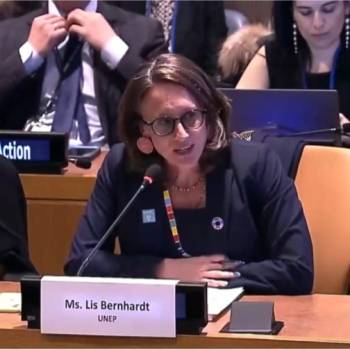
- By 2050, up to 10 billion tons of carbon dioxide needs to be removed from the atmosphere each year to achieve net zero.
- Direct air capture can provide the highest-quality carbon dioxide removals in terms of scalability, permanence and verifiability.
- However, for direct air capture to be widely adopted, the cost must fall from $600-$1,000 per ton to below $200 per ton.
By 2050, up to 10 billion tons of carbon dioxide (CO2) will need to be removed from the atmosphere annually, according to the median estimates of several net-zero scenarios considered by the Intergovernmental Panel on Climate Change.
We cannot reach net zero without carbon dioxide removal (CDR) technologies – they are essential to delivering the “net” in net zero. Of these technologies, direct air capture (DAC) has significant advantages over other CDR approaches.
Direct air capture – which extracts carbon dioxide from the atmosphere at any location, rather than at the point of emissions – can provide the highest-quality CO2 removals in terms of scalability, permanence and verifiability.
Moreover, DAC is more than 100 times as land efficient as reforestation, enhancing its scalability. In addition, direct air capture can sequester emissions for many centuries, making it the most permanent of all removal options.
Finally, tracking how many tons of carbon dioxide equivalent (CO2e) have been removed is straightforward, making it more verifiable than some nature-based solutions (e.g., ocean alkalinization). As a result, even though it is still nascent, DAC could play a critical role in delivering net zero.
Despite this, the comparatively low support from governments and other players hinders direct air capture’s movement down the cost curve, placing DAC’s full potential in danger.
Cost of direct air capture needs to drop
We estimate that for the technology to be widely adopted, the cost of DAC – the end-to-end cost of carbon dioxide removal, including final storage – will need to fall from $600-$1,000 per ton of CO2 today, to below $200 per ton and ideally closer to $100 per ton. This must happen by 2050, but preferably earlier.
This cost reduction would dramatically accelerate demand for direct air capture, encourage private developers to build more capacity, and make the technology affordable for the world.
However, to unlock the insights and technologies that will drive costs down, a far greater capacity than is currently planned will be needed in the short term, underpinned by expectations that there will be a market for the carbon credits generated.
Solving this challenge will require a paradigm shift. We believe that reducing DAC costs to $150 per ton of CO2 or below is achievable, but getting there will be a stretch. Reaching this target depends on early and dramatic progress in several areas and will require governments and other stakeholders – including carbon accounting and net zero target-setting organizations – to play their part.
How BCG supports the scale-up of DAC
At BCG, alongside our science-based targets to reduce emissions within our value chain, we’re committed to removing all remaining emissions by 2030 by purchasing high-quality carbon dioxide removal.
Specifically, we want to help scale the most promising frontier-engineered carbon removal solutions. We have established a 10-year partnership with Climeworks, a leader in carbon dioxide removal via direct air capture, as well as a partnership with CarbonCapture Inc to remove 40,000 tons of CO2e over five years.
These are just two DAC agreements BCG has signed to advance decarbonization technology, with hopes to sign several more in the future. By establishing long-term partnerships with direct air capture leaders, we aim to unlock the potential of DAC and advance towards a net-zero world.
Direct air capture costs could fall dramatically
We found that it is, in fact, possible for DAC costs to fall dramatically, even to a level below $150 per ton.
Solar installation costs, for instance, have declined by over 90% over the past 40 years.
We must deliver a similar reduction in direct air capture costs but in about half the time and to achieve this, a massive step up in investments, government support, collaboration models and broader industry engagement will be required.
We estimate that DAC costs are unlikely to drop below $300 to $400 per ton if the status quo continues. According to our model, getting costs to $200 per ton and below would need incentives such as far more favourable capital costs, supportive infrastructure to lower operational expenses, actions that accelerate learning and upfront deployment at scale well before 2050.
Currently, production volumes are far below the capacity needed to make the technology truly viable. DAC plants would also have to be far larger than they are now. As an additional benefit, all this construction activity would deliver significant economies of scale both within individual sites and across the industry as a whole.
Due to experience curve effects and shared learning, capital expenditure costs typically decline as more capacity is deployed. In the case of gas turbines, capital expenditure costs have fallen by 15% for every doubling in production capacity.
We estimate that if DAC achieves similar improvements, about one gigaton of annual capacity – requiring additional capital expenditure and operating expenses investment of about $200 billion – will be needed to move the technology sufficiently along the learning curve to make costs attractive.
With lower learning rates, the investment bill will be much higher – two to three times greater with a learning rate of 13%, for example – underlining the requirement to maximize shared learning wherever possible.
How to turn direct air capture into viable solution
Turning DAC into a viable solution for tackling the climate crisis will require action in several areas. Four near-term levers can reduce costs so that the technology is attractive, but players will need to pull hard on each one simultaneously. These are:
1. Accelerate shared learning to move faster down the cost curve.
2. When it comes to capital requirements, treat DAC like a public utility.
3. Substantially increase investment by changing carbon accounting rules.
4. Focus on optimal locations.
For a detailed explanation of each lever, please see our complete publication at BCG.com.
Low-cost direct air capture is challenging, but no more so than any other revolutionary technology. No one can say definitively what the limits on DAC improvements will be. One thing is certain, however: the stakes are incredibly high.
Getting to one gigaton of direct air capture capacity won’t be cheap. But given the depth of the climate crisis, we can’t afford not to scale this groundbreaking technology using all means available. We must grasp the challenge and go for it.
Article written by :
David Webb - Chief Sustainability Officer, Managing Director and Senior Partner, Boston Consulting Group (BCG)
Sources :
- World Economic Forum
Posted on 2023-11-04 18:13








Comments